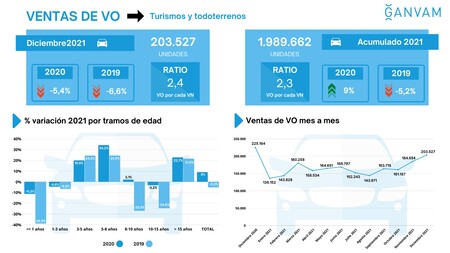Why Renault and Toyota are going to sell their own reconditioned cars and what they offer compared to a traditional second-hand car

A used product, which passes through the hands of experts, which is reviewed for possible faults, which is fine-tuned and sold for a lower price than its new counterpart but with an impeccable image. The reconditioned product has been a success in computers or mobile phones for a long time, but its arrival in the automotive sector has surprised. Although it seems like a logical step for the industry.
With renting and leasing options growing in the market, a firm commitment to carsharing and the success of companies dedicated exclusively to the sale and purchase of used vehicles, the appearance of the concept of “reconditioned vehicle” should not surprise us. There have been a number of factors that we will analyze in the next lines and that explain this movement.
What defines a reconditioned car
You define a reconditioned car exactly the same as a computer, tablet or mobile phone. They are used products that are given a second life after passing through the workshop to get them ready. If in a mobile phone the battery or the screen is checked and its components are changed if necessary, in a vehicle the state of the mechanics is checked, damage to its interior materials or friction on the sheet metal. It is checked, the damages are corrected and it is painted to make it like new.
Renault launched this message last year and we know now that Toyota will also join this new movement (Although only in the UK, at the moment). The same process is carried out by most of the companies dedicated to the sale and purchase of vehicles.. When the car is sold to one of these companies, its own mechanics review the car and dress it to make it more attractive to the next customer and, of course, it can be sold at a price higher than the money invested.
What Renault and Toyota offer with this new business route is the guarantee that their cars will be inspected by their own professionals and that the replacement parts will be those that they manufacture themselves, putting the car in line with original elements and accessories. What’s more, serves to offer its own quality certificate that, in short, gives greater confidence to the customer looking for a used vehicle. It is, simply, the contribution of added value for those looking for a second-hand car.
In addition, in the case of Renault it will go a step further. With the plan they called ReFactory some models will be updated to reduce their polluting emissions and even vehicles can be converted to make cars or electric vans. Therefore, not only will the car be reconditioned, it also opens a way to reconvert its mechanics.
How have you got here
There are several factors that explain the turn of the manufacturers themselves towards the second hand sector. One of them is the growth of formulas such as leasing and renting. In Spain, for example, the data collected by Spanish Renting Association (AER) they point out that renting has been growing for five consecutive years and that, for the first time, in 2021 the number of private clients exceeded that of companies and freelancers. In fact, 260,834 units were registered under this formula, which represents 25.27 percent of the operations total new vehicles in 2021.
Until now, when the customer returned the car to the dealer, the dealer had to sell it to a new customer. In the cases of Renault and Toyota, the car will return to them instead of staying at the dealership. This way they will be able to get it ready and sell it as a used vehicle but at a price higher than the market average. Guaranteeing that the car has been checked by the brand itself.

The movement is also understood as response to growth in the used vehicle market. In fact, for Spain the second-hand market is so relevant that sales have slowed as a consequence of the lack of stock of new vehicles. As the microchip crisis has led to a shortage of cars for fleets and dealer self-registrations, the drop in sales of Km 0 cars has been drastic, which shows that there are a good number of buyers interested in semi-new vehicles.
As you can see in the lower infographic of Ganvam (National Autonomous Group of Automobile, Truck and Motorcycle Sellers), there are two groups of cars that, even in the most complicated years like 2020 and 2021, show positive results. They are vehicles over 15 years old, due to their low price. But also those between three and five years of age and those between five and eight years. In both cases they are vehicles ending renting and leasing options, with contracts that usually end between the first three and five years of the car’s life.

If we talk about concrete figures, In Spain, a total of 1,989,662 used passenger cars were sold in 2021, for the 851,210 new cars that were purchased last year. And how they collect in MotorcycleThis difference is even more pronounced in Germany or France, where three used cars are sold for every new car.
To all of the above, we must add the commitment to carsharing. Renault, for example, has Zity, your own city car sharing company. That a car leased in renting or leasing to a client returns to the factory of the firm itself opens the possibility that this car ends up swelling the fleet destined to shared cars. More if we take into account that its ReFactory plan contemplates the conversion of vehicles with combustion engines into pure electric vehicles. Also, if not, they can always sell the car as a reconditioned.
Photos | Cottonbro, Sindre Strom and Ganvam
Reference-www.xataka.com